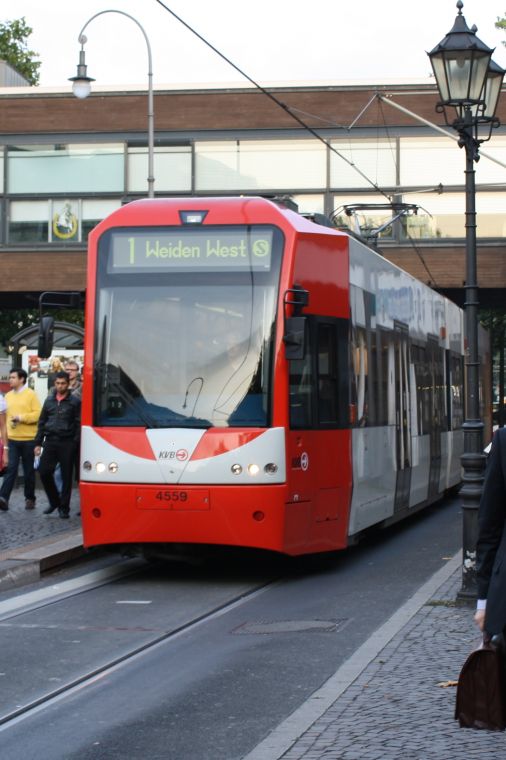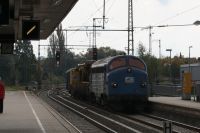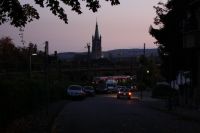KVB K4500

Posted: 19 October 2008
| Taken: | 2008-10-10 22:18:48 |
|---|---|
| Camera: | Canon EOS 1000D |
| Exposure: | 0/1 |
| ISO: | 200 |
| Aperture: | f/5.6 |
| Exposure Time: | 1/50 |
| Focal Length: | 30 mm |

This work is licensed under a Creative Commons Germany license.
Notes
A week ago (more or less) I finally managed to take a picture of the final class of LRV used in Cologne: KVB’s K4500.
The development history isn’t entirely straightforward and can be confusing, so here again in detail. First designed was the Stadtbahnwagen (german for LRV) Type A, for use in the Rhein-Ruhr LRV system. This was not useable in Cologne due to the tunnels already built there and the railway line to Bonn, so (after some whining) they got their own, the Type B. In the end, the Type A was never actually built, instead everyone just settled on the B.
The B can be used with low platforms, but it’s really most useful when used with high platforms. The goal of the LRV project was to equip Cologne (and Bonn) completely with high platforms, but while there are many high-platform stations, this was never exhaustive. In the nineties, low-floor technology was readily available, so it was decided to save cost and use that instead. For this, Bombardier designed the K4000, the grandfather of the Flexity-Swift series. Very similar vehicles are used in a lot of places, for example in London’s suburb Croydon under the name of CR4000.
Still, new vehicles were needed for Cologne’s high-floor network after some decades of Type B, and they decided on Siemens’ new design called CitySprinter. However, the prototype’s brakes failed, resulting in a crash with eight severely and several lightly injured. By the next day, the deal was over, and Bombardier got the job to design a high-floor version of the K4000 (with more modern technology, of course), which resulted in the K5000. By the way, in spite of their name, the vehicles are not numbered starting with 5001, but instead starting with 5101, since they did not want to re-use the Siemens prototype’s number. Very similar vehicles are to be used in Manchester, according to press reports as M5000 there. More-or-less similar trains are used in Frankfurt as U5.
Finally, Cologne decided to switch more lines to low-floor than originally planned, which would (if original plans were followed) have left a shortage of low-floor and too many high-floor vehicles. Consequently, the follow-up order for the K5000 was changed to low-floor versions of the K5000, the very K4500 seen here. It appears to be similar to the K4000, but technically it’s actually related more closely to the more modern K5000 and can use a significant amount of that train’s spare parts.

 Deutsche Version
Deutsche Version Entire Gallery
Entire Gallery

 Next Picture
Next Picture
 Previous Picture
Previous Picture